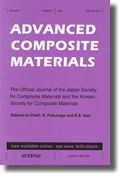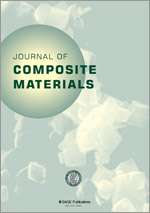
A composite material is a material which is produced from two or more constituent materials. These constituent materials have notably dissimilar chemical or physical properties and are merged to create a material with properties unlike the individual elements. Within the finished structure, the individual elements remain separate and distinct, distinguishing composites from mixtures and solid solutions.
Fiberglass or fibreglass is a common type of fiber-reinforced plastic using glass fiber. The fibers may be randomly arranged, flattened into a sheet called a chopped strand mat, or woven into glass cloth. The plastic matrix may be a thermoset polymer matrix—most often based on thermosetting polymers such as epoxy, polyester resin, or vinyl ester resin—or a thermoplastic.

In materials science, a thermosetting polymer, often called a thermoset, is a polymer that is obtained by irreversibly hardening ("curing") a soft solid or viscous liquid prepolymer (resin). Curing is induced by heat or suitable radiation and may be promoted by high pressure, or mixing with a catalyst. Heat is not necessarily applied externally, but is often generated by the reaction of the resin with a curing agent. Curing results in chemical reactions that create extensive cross-linking between polymer chains to produce an infusible and insoluble polymer network.

Polymer degradation is the reduction in the physical properties of a polymer, such as strength, caused by changes in its chemical composition. Polymers and particularly plastics are subject to degradation at all stages of their product life cycle, including during their initial processing, use, disposal into the environment and recycling. The rate of this degradation varies significantly; biodegradation can take decades, whereas some industrial processes can completely decompose a polymer in hours.
Fibre-reinforced plastic is a composite material made of a polymer matrix reinforced with fibres. The fibres are usually glass, carbon, aramid, or basalt. Rarely, other fibres such as paper, wood, boron, or asbestos have been used. The polymer is usually an epoxy, vinyl ester, or polyester thermosetting plastic, though phenol formaldehyde resins are still in use.
Basalt fibers are produced from basalt rocks by melting them and converting the melt into fibers. Basalts are rocks of igneous origin. The main energy consumption for the preparation of basalt raw materials to produce of fibers is made in natural conditions. Basalt continuous, staple and super-thin fibers are produced and used. Basalt continuous fibers (BCF) are used for the production of reinforcing materials and composite products, fabrics and non-woven materials. Basalt staple fibers - for the production of thermal insulation materials. Basalt superthin fibers (BSTF) - for the production of high quality heat and sound insulating and fireproof materials.

Hexcel Corporation is an American public industrial materials company, based in Stamford, Connecticut. The company develops and manufactures structural materials. Hexcel was formed from the combination of California Reinforced Plastics, Ciba Composites and Hercules Composites Products Division. The company sells its products in commercial, military and recreational markets for use in commercial and military aircraft, space launch vehicles and satellites, wind turbine blades, sports equipment and automotive products. Hexcel works with Airbus Group, The Boeing Company, and others. Since 1980, the firm has publicly traded on the New York Stock Exchange under the ticker symbol HXL.
CSA was a division of Cambridge Information Group and provider of online databases, based in Bethesda, Maryland, before merging with ProQuest of Ann Arbor, Michigan, in 2007. CSA hosted databases of abstracts and developed taxonomic indexing of scholarly articles. These databases were hosted on the CSA Illumina platform and were available alongside add-on products like CSA Illustrata. The company produced numerous bibliographic databases in different fields of the arts and humanities, natural and social sciences, and technology. Thus, coverage included materials science, environmental sciences and pollution management, biological sciences, aquatic sciences and fisheries, biotechnology, engineering, computer science, sociology, linguistics, and other areas.
Carbon fiber-reinforced polymers, carbon-fibre-reinforced polymers, carbon-fiber-reinforced plastics, carbon-fiber reinforced-thermoplastic, also known as carbon fiber, carbon composite, or just carbon, are extremely strong and light fiber-reinforced plastics that contain carbon fibers. CFRPs can be expensive to produce, but are commonly used wherever high strength-to-weight ratio and stiffness (rigidity) are required, such as aerospace, superstructures of ships, automotive, civil engineering, sports equipment, and an increasing number of consumer and technical applications.

Advanced Engineering Materials is a peer-reviewed materials science journal that publishes monthly. Advanced Engineering Materials publishes peer-reviewed reviews, communications, and full papers, on topics centered around structural materials, such as metals, alloys, ceramics, composites, plastics etc..

Advanced Composite Materials is a bimonthly peer-review scientific journal that was established in 1991. It is published by Taylor & Francis on behalf of the Japan Society for Composite Materials and the Korean Society for Composite Materials. The journal covers all scientific and technological aspects of composite materials and composite material structures, including physical, chemical, mechanical, and other properties of advanced composites as well as microscopic to macroscopic behavior studied both experimentally and theoretically. Novel fabrication techniques for composites and composite structural components are also included.

The Journal of Cellular Plastics is a bimonthly peer-reviewed scientific journal that covers the field of polymer science and foamed plastics technology. The journal was established in 1965 and is published by SAGE Publications. it was established in 1965 and the editors-in-chief are Chul B. Park.

The Journal of Composite Materials is a peer-reviewed scientific journal that covers the field of materials science. Its editor-in-chief is H.Thomas Hahn (UCLA). It was established in 1967 and is published by SAGE Publications in association with the American Society for Composites.

The Journal of Elastomers and Plastics is a bimonthly peer-reviewed scientific journal that covers materials science of elastomers and plastics. The editor-in-chief is Heshmat A. Aglan. It was established in 1969 as the Journal of Elastoplastics, obtaining its current name in 1974. The journal is published by SAGE Publications.

Journal of Thermoplastic Composite Materials is a peer-reviewed academic journal that publishes papers in the field of Materials Science. The journal's editor is John W. Gillespie Jr.. It has been in publication since 1988 and is currently published by SAGE Publications.
The Journal of the European Ceramic Society is a monthly peer-reviewed scientific journal published by Elsevier on behalf of the European Ceramic Society. It covers research related to conventional categories of ceramic: structural, functional, traditional or composite. It was established in 1985 as the International Journal of High Technology Ceramics, obtaining its current name in 1989.
Quartz fiber is a fiber created from high purity natural quartz crystals. It is made by first softening quartz rods and then creating filaments from the rods. Since natural quartz crystals of high purity are rare, quartz fiber is more expensive than alternatives and has limited applications.
Pedram Sadeghian is an associate professor in the Civil Engineering Department at Dalhousie University in Halifax, Nova Scotia, Canada. He is also a Tier 2 Canada Research Chair in Sustainable Infrastructure.
The Journal of Composites for Construction is a peer-reviewed scientific journal published by the American Society of Civil Engineers and publishes original content dealing with the use of fiber-reinforced composite materials in construction. The journal editors are looking for papers that bridge the gap between research in the mechanics and manufacturing science of composite materials and the analysis and design of large civil engineering structural systems and their construction processes.

Amar K. Mohanty is a material scientist and biobased material engineer, academic and author. He is a Professor and Distinguished Research Chair in Sustainable Biomaterials at the Ontario Agriculture College and is the Director of the Bioproducts Discovery and Development Centre at the University of Guelph.











